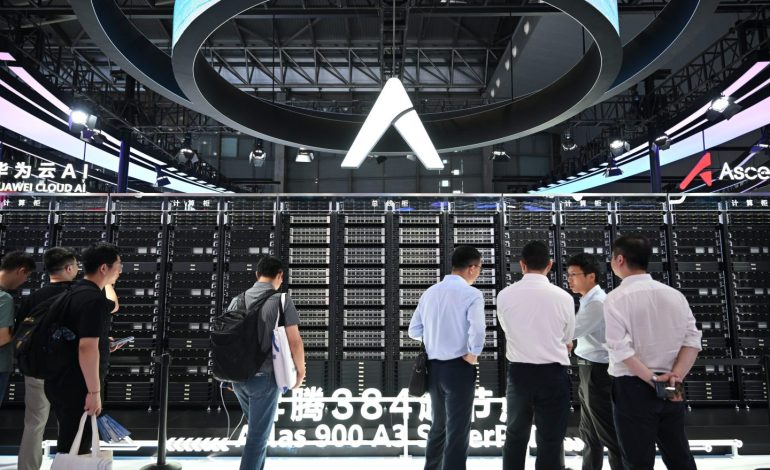China’s AI Giants Team Up to Build a Homegrown Tech Future Amid US Pressure

While American politicians tighten the screws on AI exports, China’s top tech players are teaming up—and pushing forward. This weekend’s World Artificial Intelligence Conference in Shanghai wasn’t just about shiny new gadgets and flashy demos. It was China’s bold reminder to the world: we’re building our own AI ecosystem, with or without the West.
Two major industry alliances were unveiled during the three-day event, part of a larger push by Chinese AI firms to cut reliance on foreign (read: American) tech—especially Nvidia, whose chips have been a lifeline for many advanced systems but are now caught in the crossfire of US sanctions.
The message from China? If we can’t buy it, we’ll build it.
The biggest announcement came in the form of the Model-Chip Ecosystem Innovation Alliance, a new collaboration between Chinese AI chipmakers and large language model (LLM) developers. Think of it as an all-star cast featuring Huawei, Enflame, Biren, and Moore Threads—companies that are now banding together to create a fully domestic AI supply chain, from chips to cloud infrastructure.
“This is a full-stack ecosystem—from silicon to software,” said Zhao Lidong, CEO of Enflame. “We’re connecting the whole tech chain.”
Notably, many of these companies are already on Washington’s sanctions radar. That hasn’t slowed them down.
A second alliance, the Shanghai General Chamber of Commerce AI Committee, brings together even more heavy hitters. This one aims to integrate AI deeper into Chinese industry and includes firms like SenseTime (pivoting hard from facial recognition to LLMs), MiniMax, and chipmakers Metax and Iluvatar CoreX.
SenseTime and several others in the alliance have been sanctioned by the US, but rather than back off, they’re doubling down on domestic innovation.
Beyond the alliances, China’s tech titans came to the Shanghai conference with serious firepower.
- Huawei’s CloudMatrix 384 turned heads. It features 384 of its 910C chips and, according to US-based SemiAnalysis, it actually outperforms Nvidia’s top-tier GB200 system on certain metrics. The trick? Clustering lots of “good enough” chips into one ultra-efficient system.
- Metax flexed with a “supernode” server using 128 AI chips to power large-scale data centers.
- Alibaba teased its Quark AI Glasses, powered by its Qwen AI model, set to launch later this year. Users will be able to scan QR codes and navigate using voice alone—futuristic, yes, but also designed for real-world use.
Tencent and Baidu also made splashes: Tencent unveiled its Hunyuan3D model, which turns text and images into interactive 3D worlds, while Baidu showed off its latest digital human tech, capable of cloning voices and body language in under 10 minutes.
In a keynote speech, Chinese Premier Li Qiang called for a new global organization to regulate AI—pushing for “global solidarity” and cooperation. His comments stood in stark contrast to US President Donald Trump, who just launched a deregulation-heavy “AI Action Plan” focused on letting US firms run wild.
Trump’s America First approach may benefit Big Tech, but it’s raising eyebrows globally. As the US peels away from international collaboration, China is trying to position itself as the adult in the AI room—offering structure where Washington offers speed.
With access to cutting-edge US chips cut off, China is pivoting hard. But instead of grinding to a halt, the country’s AI industry is adapting fast. Huawei’s hardware wins and the growing sophistication of domestic LLMs prove that innovation isn’t confined to Silicon Valley.
By organizing itself into powerful alliances, China is signaling it’s serious about building a self-sufficient AI ecosystem. The West may still lead in some benchmarks—but China is building for scale, sovereignty, and staying power.
Reuters, Fortune, and Business Insider contributed to this report.








The latest news in your social feeds
Subscribe to our social media platforms to stay tuned